A few years back I bought the Zoom H1. After a couple of days using it, I returned it (amazon return policy is awesome!). Last month, I bought the Zoom H1n – the newer/better(?) version of the H1. And I’m going to keep it and recommend it for researchers. In this review, I let you know why.
Summary: Zoom H1n Review
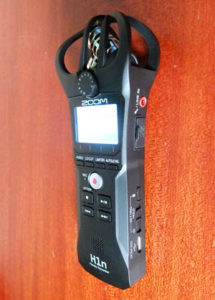
- The good: very good recorded sound. Lots of recording versatility – 96 kHz 24 bit wav. 5v plug in power, you can power this recorder using the USB and use it as a USB microphone.
- The bad: analog knob, no internal memory. Max 32GB micro SD card external memory. Cannot recharge batteries, 10 hours battery life.
- Verdict: great for recording interviews in quiet locations, using lav microphones, focus group discussions with the ME33 boundary mic. Definitely best recorder for powering ME33 boundary microphones. Buy the Zoom H1n from Amazon.
The Zoom H1n is an entry level professional digital recorder. If you want to dip your toes into the world of professional audio recording, this is great recorder to get you started. Now, size wise, this is the largest recorder I currently own. Compared to the Sony ux560, it’s huge. But the design is great, fits like a glove to your hand. Minimalistic menus, but don’t be fooled, it packs a lot of features.
Zoom H1n Specifications
[table id=5 /]
The Good
One of the main reasons why I ditched the older Zoom H1 was how sensitive it was. I’d always record a lot of handing and background noise. But Zoom have fixed the sensitivity issue. And I really like the quality of the sound that the Zoom H1n now records. Listening to the recordings I was impressed!
Since this is a professional digital audio recorder, you get a lot of recording versatility. The Zoom H1n can record in the 96 kHz 24 bit Wav – you can get really good quality, but the files will be large. But that’s just one of the 9 different recording formats you can use on the Zoom H1n.
Another highlight of the Zoom H1n is the 2.5v plug in power output. This recorder will work with most lav microphones that require plug in power. But more importantly, it powers the ME33 boundary microphones that I recommend for recording focus group discussions, meetings, and conferences. And the Zoom H1n now takes 2 AAA batteries = more power.
The Zoom H1n comes with a “beefed” up USB. Unlike other digital recorders, it’s not just a USB out – allowing you to transfer files from the recorder to your computer. It’s also a USB in. That adds a couple of great features. You can power the Zoom H1n using USB (5V USB charger). So you can use the H1n without batteries – great. You can also use the H1n as a USB mic – just plug it into computer (using a USB cable) and record using your favorite software.
The Bad
Unlike the older H1, the H1n comes with an analog volume dial knob. Great idea, but it’s very easy to unknowingly change your gain setting. And the Hold button does not lock this volume dial. If you are going to move the recorder after setting the gain setting, I recommend you tape the knob.
The sound. Still a tad sensitive, more than most digital recorders. So you have to be careful with handling noise – so you’ll want to set it up and let it be. I’d strongly recommend the Zoom APH-1n Accessory Pack (amazon link). Comes with a stand that gets the H1n off the table – reduces rustling/scribbling noises.
Also the low cut filter was disappointing. I expected it to do a better job at reducing low-frequency noise. But it captures the most low frequency noise of all the recorders I own. Believe me, it’s not terrible, and you’ll not notice it unless you compare it to other recorders. But something to be cognizant of if you are recording in a location with a lot of low frequency noise – fans, ACs, etc.
There’s also an issue with the limiter. The limiter can be useful when you have intermittent loud noises that cause clipping. However, setting it this option to on AND setting the gain to be 6 or more you’ll get increased background noise in your recording. But the problem is not actually the limiter, it’s that there is a 12dB reduction in the noise floor of the H1n at around 5.5 gain and above. So you want to record above this cut-off point, but if you get clipping, turning on the limiter will reset the noise floor to the “default value” – increasing it by 12dB.
I’ve found the best gain settings on the Zoom H1n to be between 6-7 without the limiter set to ON. That gives me a lower noise floor and I’m unlikely to encounter clipping. But it is disappointing that I cannot take advantage of the lower noise floor on the H1n at higher gains levels and also use the limiter.
Memory: no internal memory. And H1n supports max 32GB micro SDHC external memory – which you’ll have to buy separately (Amazon link to microSD I use on my H1n). My expectations were that the Zoom H1n would be compatible with the newer/better/more capacity micro SDXC cards (more on different types of microSD cards here), but it’s not.
For someone who likes to have lots of memory (in case I forget to transfer the files to my computer), I was really disappointed. But I did have success in getting a 64GB SDXC card to work with the H1n; here’s a how to post. Still, you get at a minimum 15 hours of 96 kHz/24 bit audio with a 32GB SD card…not bad.
Finally, you cannot recharge batteries using this recorder. And you only get about 10 hours of continuous recording using alkaline batteries. I like using rechargeable batteries (less waste = great for the environment), but I keep forgetting to charge them. Being able to power the Zoom H1n using a USB battery pack, however, makes up for it. That’s why I’m keeping it – to power my Olympus ME33 boundary microphones.
And I’m sure I mentioned this, if you are looking for an unobtrusive recorder – look elsewhere. But it does have an impressive, professional look/feel to it.
Verdict
If you are recording interviews on the go, in the field, focus group discussions with the ME33 bourdary mic, using lav mics: this is a great recorder to buy. You are limited to 32 GB and 10 hours battery life. But you can power the Zoom H1n using the USB, which is what I recommend you do if you’re recording a long session. Definitely recommended for powering ME33 boundary microphones. A great entry recorder for audio professionals, not recommended for everyday users. Get the Zoom H1n from Amazon. As always, please keep us in mind for all of your academic transcription services needs.
References

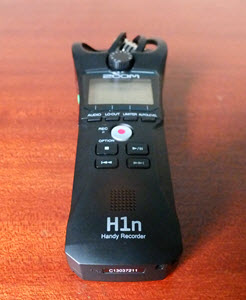
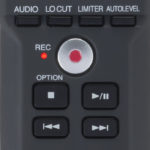
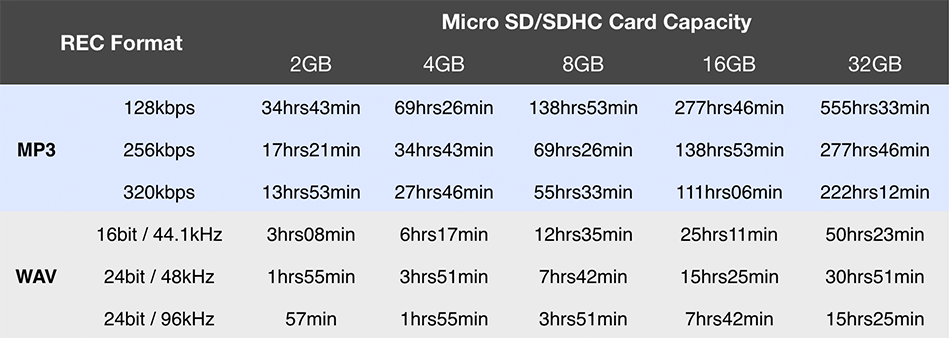
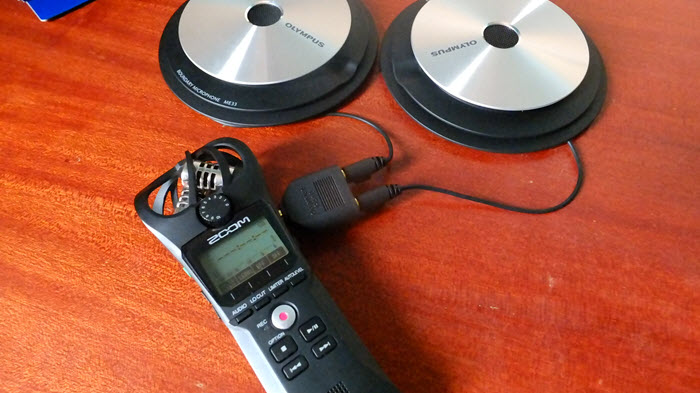

Leave a Reply